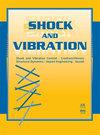虚拟轨道列车铰接系统的阻尼系数优化
IF 1.2
4区 工程技术
Q3 ACOUSTICS
引用次数: 0
摘要
虚拟轨道列车是一种新型轨道交通,由于多节编组结构导致车辆自由度较大,可能会出现甩尾、横摆、折叠等不稳定现象,影响车辆行驶的稳定性和乘坐舒适性。为探讨铰接系统阻尼系数对车辆动力学性能的影响,根据三模块六轴虚拟轨道列车的实际参数建立了车辆系统动力学模型。根据 ISO14791:2000,选择直线、变道、1/4 圆曲线等典型工况,通过协同仿真优化铰接系统的阻尼系数。研究表明,在直线工况下,增大阻尼系数可以有效抑制偏航角加速度,提高车辆的横向乘坐舒适性,但对纵向乘坐舒适性影响不大。在变道条件下,阻尼系数过大或过小都会降低列车的横向稳定性,合理的阻尼系数可以提高车辆的偏航阻尼比,减少车辆间的横向摇摆振动。在 1/4 圆曲线条件下,附加的铰接系统阻尼器会降低车辆的曲线通过性能。本文首次对多模块全互联车辆的铰接稳定性进行了分析和优化,并给出了基于几何跟踪控制方法的阻尼系数控制策略。研究成果对虚拟轨道列车铰接系统的参数选择以及相关车辆专用铰接系统的设计与开发具有重要意义。本文章由计算机程序翻译,如有差异,请以英文原文为准。
Damping Coefficient Optimization for the Articulated System of Virtual Track Trains
Virtual track trains are a new type of rail transportation because the multisection formation structure leads to more degrees of freedom of the vehicle, which may cause unstable phenomena, such as tailing, cross-swing, and folding, affecting the stability and ride comfort of the vehicle driving. To explore the effect of damping coefficient of the articulated systems on vehicle dynamics performance, a vehicle system dynamics model is established based on the actual parameters of a three-module six-axle virtual track train. According to ISO14791: 2000, select typical working conditions such as straight line, lane change, and 1/4 circle curve, and optimize the damping coefficient of the articulated systems through co-simulation. The study shows that under straight-line conditions, increasing the damping coefficient can effectively suppress the yaw angular acceleration and improve the lateral ride comfort of the vehicle but has little effect on the vertical ride comfort. Under lane change conditions, too large or small damping coefficients will deteriorate the train’s lateral stability, and a reasonable damping coefficient will improve the yaw damping ratio of the vehicle and reduce the lateral sway vibration between vehicles. Under the 1/4 circle curve conditions, the additional articulated system damper will reduce the vehicle’s curve passing performance. In this paper, the articulation stability of multimodule fully connected vehicles is analyzed and optimized for the first time, and the damping coefficient control strategy is given based on the geometric tracking control method. The research results are of great significance for the parameter selection of virtual track trains’ articulated system and the design and development of specialized articulated systems for related vehicles.
求助全文
通过发布文献求助,成功后即可免费获取论文全文。
去求助
来源期刊

Shock and Vibration
物理-工程:机械
CiteScore
3.40
自引率
6.20%
发文量
384
审稿时长
3 months
期刊介绍:
Shock and Vibration publishes papers on all aspects of shock and vibration, especially in relation to civil, mechanical and aerospace engineering applications, as well as transport, materials and geoscience. Papers may be theoretical or experimental, and either fundamental or highly applied.
 求助内容:
求助内容: 应助结果提醒方式:
应助结果提醒方式:


